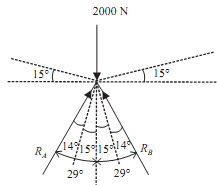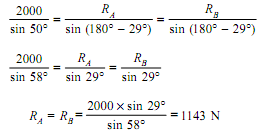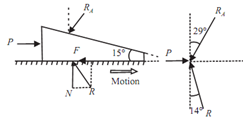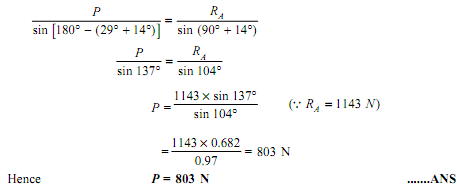Example of Wedge friction:
Two blocks A and B are employed to raise load of 2000 N resting on another block C by the application of force P as shown in the figure given below. Neglecting weights of wedge blocks and assuming co efficient of friction µ = 0.25 for all surfaces, determine value of P for impending upward motion of block C.
Sol.: The block C, under action of forces P on blocks A and B, tends to move upward. Thus the frictional forces will act downward.
tanφ= µ = 0.25 (given),

where φ is angle of friction φ= 14°
Consider equilibrium of block C :


It is acted upon by following forces :
(i) Load 2000 N,
(ii) Total reaction RA offered by the wedge block A, and (iii) Total reaction RB offered by the wedge block B. By using Lami's theorem, we obtain
Consider equilibrium of block A:
It is acted upon by the following forces: (i) Force P,
(ii) RA (from block C), and
(iii) Total reaction R that isoffered by horizontal surface.

Using Lami’s theorem, we have
